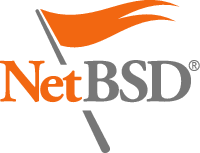Google Code-In (GCi) is a project like Google Summer Of Code (GSoC), but for younger students. While GSoC is aimed at university students, i.e. for people usually of age 19 or older, GCi wants to recruit pupils for Open Source projects.
When applying for participation, every project had to create a large number of potentially small tasks for students. A task was meant to be two hours of work of an experienced developer, and feasible to be done by a person 13 to 18 years old. Google selected ten participating organisations (this time, NetBSD was the only BSD participating) to insert their tasks into Google Melange (the platform which is used for managing GCi and GSoC).
Then, the students registered at Google Melange, chose a project they wanted to work on, and claimed tasks to do. There were many chats in the NetBSD code channel for students coming in and asking questions about their tasks.
After GCi was over, every organisation had to choose their two favourite students who did the best work. For NetBSD, the choice was difficult, as there were more than two students doing great work, but in the end we chose Mingzhe Wang and Matthew Bauer. These two "grand price winners" were given a trip to Mountain View to visit the Google headquarters and meet with other GCi price winners.
You can see the results on the corresponding wiki page
There were 89 finished tasks, ranging from research tasks (document how other projects manage their documentation), creating howtos, trying out software on NetBSD, writing code (ATF tests and Markdown converters and more), writing manpages and documentation, fixing bugs and converting documentation from the website to the wiki.
Overall, it was a nice experience for NetBSD. On the one hand, some real work was done (for many of them, integration is still pending). On the other hand, it was a stressful time for the NetBSD mentors supervising the students and helping them on their tasks. Especially, we had to learn many lessons (you will find them on the wiki page for GCi 2012), but next time, we will do much better. We will try to apply again next year, but we will need a large bunch of new possible tasks to be chosen again.
So if you think you have a task which doesn't require great prior knowledge, and is solvable within two hours by an experienced developer, but also by a 13-18 year old within finite time, feel free to contact us with an outline, or write it directly to the wiki page for Code-In in the NetBSD wiki.
SX is more or less a vector processor built into a memory controller. The 'or less' part comes from the fact that it can't actually read instructions from memory - the CPU has to feed them one by one. This isn't quite as bad as it sounds - SX has plenty of registers ( 128 - eight of them have special functions, the rest is free for all ) and every instruction takes a count to operate on several subsequent registers or memory locations ( ALU ops can use up to 16, memory accesses up to 32 ). SX supports some parallelism too - the ALUs can do up to two 16bit multiplications and two other arithmetic or logical ops per clock cycle ( 32bit multiplications use both ALUs ). The thing runs at 50MHz - not a whole lot by today's standards but it can be a significant help to any CPUs you can put into these machines.
The kernel part hs been committed a while ago ( see cgfourteen at obio ), always runs in 8bit colour with everything ( scrolling, character drawing etc. ) done by SX. Substantially faster than software only operation.
The Xorg driver ( xf86-video-suncg14 that is, it needs a recent cgfourteen kernel driver to map SX registers ) uses EXA, by default it enables basic acceleration ( Solid and Copy, hardware cursor support has been added years ago ), Xrender acceleration is incomplete and can be enabled by adding Options "Xrender" "true" to the cg14's device section in xorg.conf. For now it implements what's needed for anti-aliased font drawing, assembling alpha maps in video memory and operations KDE3 uses for drawing icons, buttons and so on. As it is now KDE3 looks mostly right - there are a few rendering errors ( for example the corners of the white frame in Konqueror's startup page, also some text is drawn with red and blue channels switched ) but nothing that would interfere with functionality.
Speed isn't great ( well, the hardware is 20 years old ) but the improvement over unaccelerated X is more than noticeable. Some benchmark numbers, all taken on an SS20 with a single 125MHz HyperSPARC:
- x11perf -comppixwin went from 26.3 to 93.7
- x11perf -compwinwin went from 8.8 to 93.5
- x11perf -aaftext went from about 4000 ( 5000 with shadow fb but that's technically cheating since not everything is drawn into video memory ) to 16000
There is still room for improvement - for now all Xrender operations work on one pixel at a time, SX has enough registers to do at least four in most cases. Also, functionality is added as needed whenever I run into it, so other things are likely broken ( I know gtk2 is, but that's easy to fix ) which is why Xrender acceleration is disabled by default.
